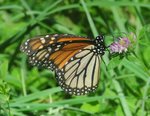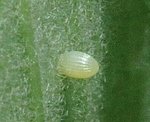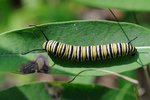 Narrowsburg
NarrowsburgLight Rain Fog/Mist, 43°
Wind: 8.1 mph
 Narrowsburg
NarrowsburgFor most of the summer, people have been seen seeing monarch butterflies in almost every favorable habitat, whether it be a field, on public land, or your own garden. Also, many eggs have been …
Stay informed about your community and support local independent journalism.
Subscribe to The River Reporter today. click here
This item is available in full to subscribers.
Please log in to continue |



For most of the summer, people have been seen seeing monarch butterflies in almost every favorable habitat, whether it be a field, on public land, or your own garden. Also, many eggs have been observed being laid by female monarchs, as well as larvae, with their distinctive banding, as they feed on milkweed plants. Some folks have been observing larvae inside caterpillar tents and watching the metamorphosis into adult butterflies. The question that some readers have is how the species as a whole is doing, and will we have a repeat of a few years ago when monarchs were very scarce in the region.
According to a report released by the Center for Biological Diversity, during March of this year, the annual count of occupied monarch habitat was 2.48 hectares, which is down from 2.91 hectares last year. This year’s drop is attributed in part to unseasonable weather last year, including late-spring freezes that killed milkweed and caterpillars, and an unseasonably warm fall that kept late-season monarchs from migrating, according to the news release. It is estimated that the monarch population has dropped 90% in the last two decades. An inclement weather event or something similar could cause real problems with the monarch’s survival. To that end, the U.S. Fish and Wildlife Service has agreed to decide on endangered species status for the monarch by June of 2019.
Reducing or modifying agricultural use of herbicides to cut the further loss of milkweed habitat as well as the use of buffer areas around planted fields (which will allow milkweed to grow) are a couple of large-scale conservation measures that are effective. In your garden, you can also help the monarchs by being careful on the use of any chemicals. Plant monarch-friendly flowers such as zinnias or butterfly bushes (many of these also attract hummingbirds).
Most area fields and other open areas in the region seem to have an abundance of milkweed, but if you want to see the first part of the monarch’s lifecycle in your own yard, you can plant milkweed. Milkweed is the only plant that monarch caterpillars will eat, and adult females will lay eggs on the underside of milkweed leaves. Now is the time for the caterpillars, and soon they will form a chrysalis, then emerge as butterflies. As many people have seen, the monarch has a fascinating lifecycle; let’s hope they don’t go away.
Comments
No comments on this item Please log in to comment by clicking here